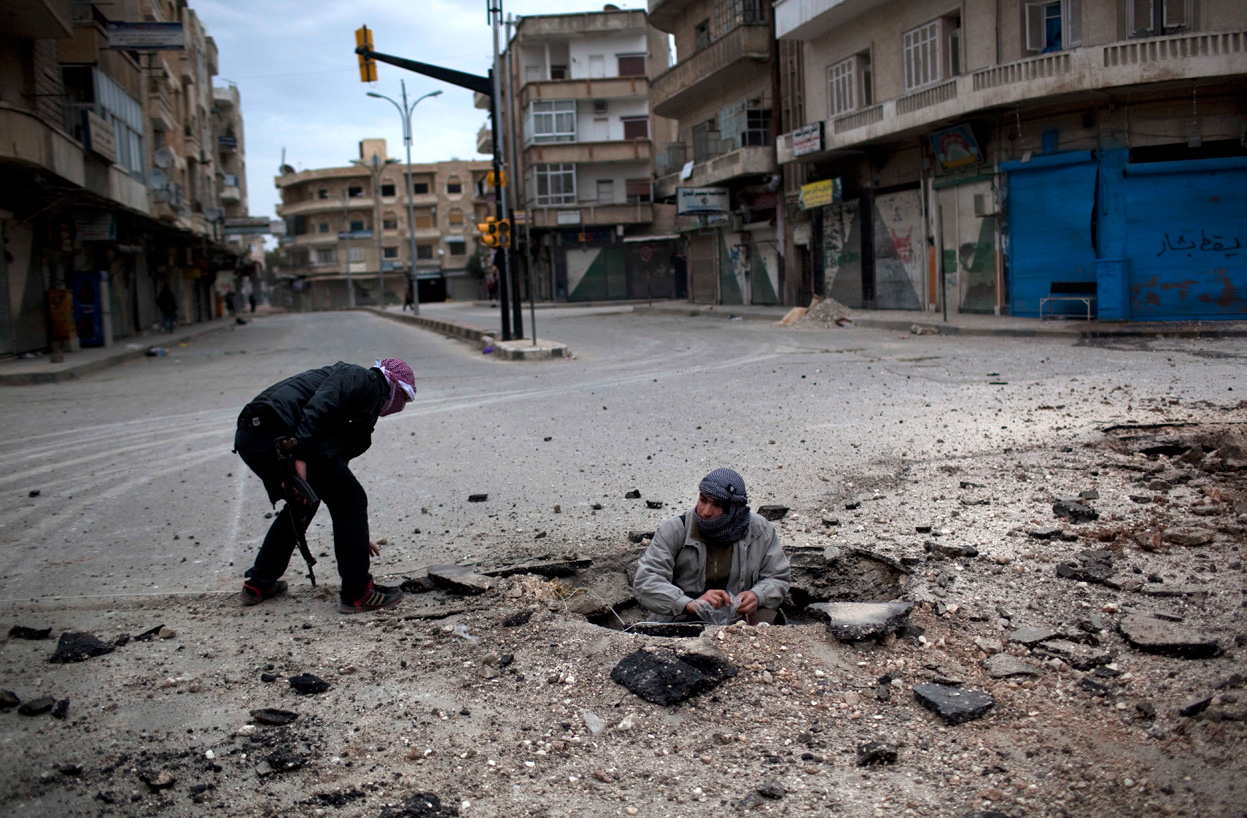Killing continues in Syria
DAMASCUS, Syria, Jan. 2 (UPI) — More than 60,000 people have been killed in Syria since big protests began there in 2011, the United Nations said Wednesday.
The U.N. Human Rights Office released a report that said 59,648 people were killed between March 15, 2011, and Nov. 30, 2012. That figure is considerably higher than those given out by Syrian rights groups and rebel organizations.
“Given there has been no let-up in the conflict since the end of November, we can assume that more than 60,000 people have been killed by the beginning of 2013,” High Commissioner for Human Rights Navi Pillay said. “The number of casualties is much higher than we expected, and is truly shocking.”
The bloodshed continued Wednesday with Syrian activists reporting air strikes, including one that killed 12 members of the same family.
The Syrian Network for Human Rights said on its Facebook page the family members — mostly children — were killed during an aerial bombardment on Mouadamiya.
Witnesses also said dozens of people were killed and wounded from an air attack on a gas station in the al-Maliha area and many of the bodies appeared to have been burned.
The Syrian Network for Human Rights said it also documented the death of 115 people, including 23 killed by torture, across Syria Tuesday, and including 13 children, five women.
The network said Damascus and its countryside reported 38 deaths Tuesday, followed by Hama, with 29 deaths.
Meanwhile, the political adviser of the Free Syrian Army claimed the Syrian opposition can assemble chemical weapons if necessary, Today’s Zaman reported.
Adviser Bassam al-Dada told Turkey’s state-run Anatolia news agency Syria’s President Bashar Assad should know that if he threatens opposition fighters with chemical weapons, “we also possess them.”
Opposition forces have the know-how to build and detonate a chemical weapon because of army officers with that expertise who defected, al-Dada said, adding that the opposition won’t use such weaponry if the Syrian regime doesn’t.
“If we ever use them, we will only hit the regime’s bases and centers,” he stressed.
Last month, Bashar Ja’afari, Syria’s ambassador to the United Nations, warned that extremist groups could use chemical weapons against the Syrian people and blame the government.
Although Western leaders have shown reluctance to intervene in Syria’s civil war that began in March 2011, U.S. President Obama has said Assad’s use of chemical weapons against the opposition fighters would be a “red line.”
The United Nations said its report was put together over five months using casualty lists from seven different sources, including the Syrian government. All victims had to be identified by first and last names and date and place of death to be counted.
The analysts said the 60,000 figure likely is lower than the actual number of deaths, given that reports with insufficient information were excluded from the list, and that some killings may not have been documented.
“This massive loss of life could have been avoided if the Syrian government had chosen to take a different path than one of ruthless suppression of what were initially peaceful and legitimate protests by unarmed civilians,” Pillay said.
As the situation devolve, she said, number of serious crimes, including war crimes and crimes against humanity, grew on both sides.
The analysis indicated a steady increase in the average number of documented deaths per month since the beginning of the conflict, from around 1,000 per month in the summer of 2011 to an average of more than 5,000 per month since July 2012.
upi


